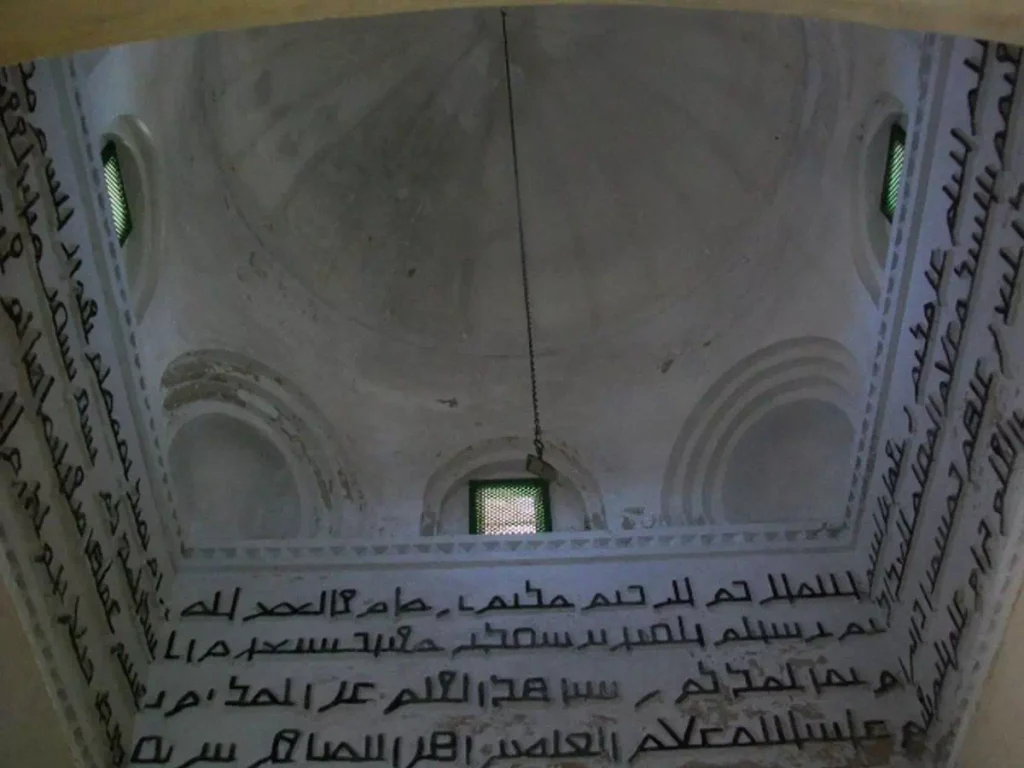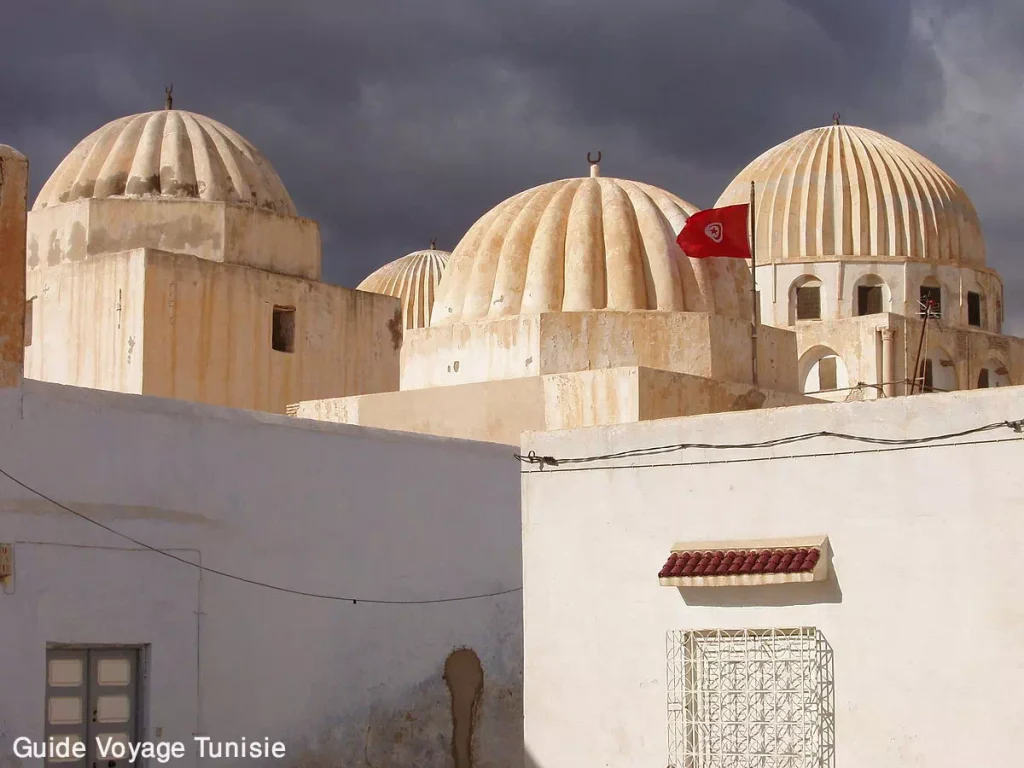Sidi Amor Abada Museum
The Sidi Amor Abada museum was housed in a zaouia -mausoleum- erected in 1872 and which houses the tomb of an equally curious character: Amor Abada, better known by the reverent name of Sidi Abada.
It is, undoubtedly, one of the most curious places in Kairouan and even in Tunisia.
Built around 18721, the monument contains the tomb of Sidi Amor Abbada al-Ayari, a marabout who lived during the first half of the 19th century. Exercising the profession of master blacksmith, he was an extraordinary character who was the object of respect and veneration on the part of the population – who attributed to him gifts and supernatural powers – as well as the Husseinite sovereigns who filled him favors, notably Moustapha Bey and Ahmed Ier Bey. Many tales and myths have been woven around the marabout who died around 1855, some of which have remained in the collective memory to this day.
The building
The building, whose total area exceeds 1,500 m2, is distinguished on the outside by an impressive set of seven domes on ribbed squinches in a typically Kairouan style known for a millennium of course, but the domes have never been used in so many. This is what gives the monument a singular air, imbued with a serious solemnity.
The interior of the monument, whose very massive walls are two, four or even five meters thick, includes a maze of galleries and rooms surmounted by cupolas. The decorative motifs are essentially made up of fleurons and crescents adorning the abacuses surmounting the capitals of the columns. Its Andalusian architectural style is most marvelous.
The main room of the zaouia, housing the tomb of the venerable character, has been converted into a museum which exhibits works that belonged to Sidi Amor Abbada or made by him: very heavy wrought iron sabers covered with solid wood scabbards, anchors giants, huge chests etc.
These extravagant and excessive pieces, dating from the first half of the 19th century and some of them bearing inscriptions in cursive writing, reflect the strong and megalomaniac character of the marabout.
The contents
The museum contains handmade objects in wood and ironwork constituting true works of art by the megalomaniac sidi amor abada with inscriptions relating the story of his enigmatic life.
In a large room of this building were grouped objects that belonged to Sidi Abada or that were made by himself. The guide says: “These objects are disproportionately not very functional, they are of giant size… giant anchors intended, it is said, to protect Kairouan and to keep it welded to the country, very heavy swords, a colossal pipe, very heavy bronze pestles… All these pieces bear intaglio engraved inscriptions… a story of the very life of this character”.
The character
It must be said that the character is singular, too, “out of the ordinary, enigmatic, of an astonishing strength of character and faith, excessive in power and grandeur… venerated and feared at the same time”.
A master blacksmith by profession, Sidi Amor Abada was driven by a mystical impulse disturbed by the state of decay in which the country had entered on the eve of the French colonial expedition (April – May 1881). And he had to express his anxieties and fantasies in the form of extravagant creations.
It is a famous figure out of the ordinary by the strength of his character and faith who marked the life of Kairouan. Master blacksmith raised to the rank of venerated saint and feared even by the Kairouanese whose miracles are renowned.
The saint declared in 1855 that Sebastopol would only be taken when two cannons which he sent to the Bey from Kairouan arrived in front of the Muscovite city, these two sacred cannons should produce a marvelous effect and bring about the fall of this city.
once in Tunis, the bey expressly sent a vessel to Constantinople to transport them. The whole people of the faithful, throughout the regency and in Tunis in particular, were already rejoicing in advance at the capture of Sebastopol which was infallibly going to take place. The date was even calculated from the day on which it was assumed that the guns would have reached their destination.
From Constantinople the Sultan despatched them to the Crimea, and by a striking coincidence Sevastopol was actually taken at the same time, so to speak, of the arrival of the guns. Thus the joy was great in Tunis when we learned this news expected and impatiently awaited by all the faithful followers of Islam.
The Sidi Amor Abada museum in pictures

